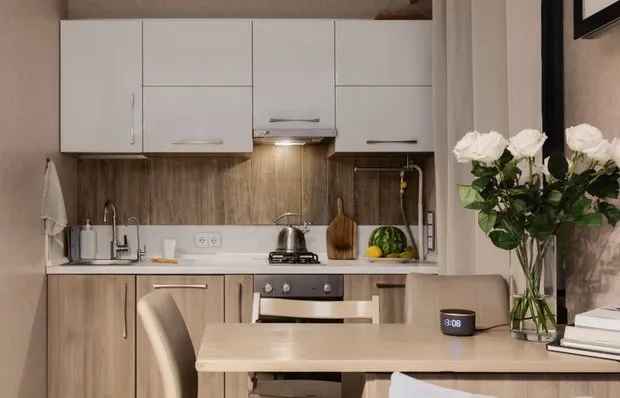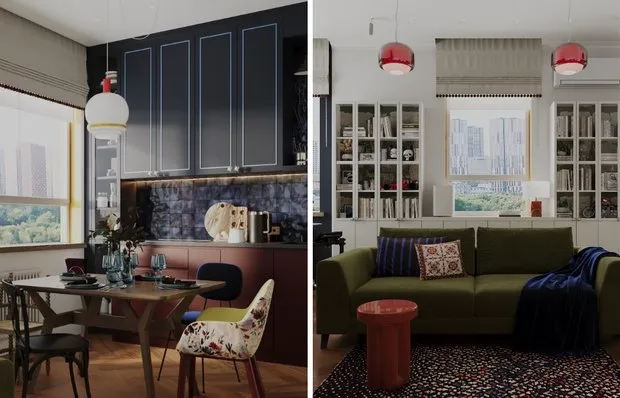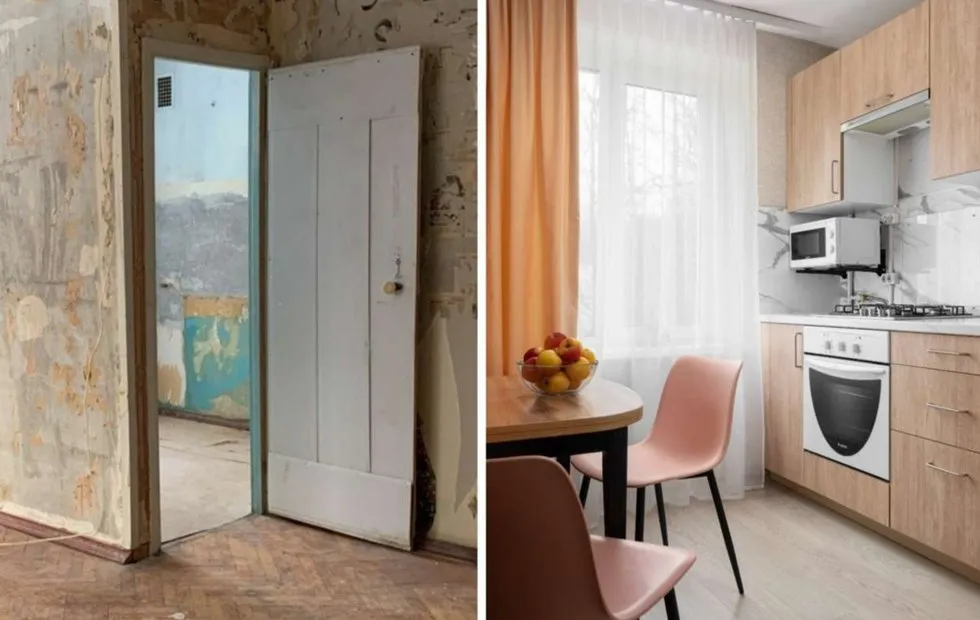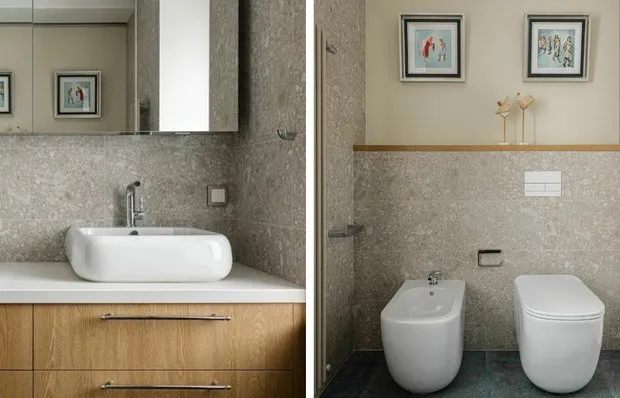There can be your advertisement
300x150
Why Soviet Homes Had Less Dust
Let's find out what changed in our homes over the past decades and why modern apartments have become dust collectors
Ask your grandmother how often she wiped the dust in her youth, and you'll hear a surprising answer: once a week, or even less. Today, dust accumulates literally in one to two days, turning cleaning into an endless battle. It's not that people were less clean or didn't notice dirt in the past. Soviet homes really did have significantly less dust, and there are scientific reasons for this. Let's find out what changed in our homes over the past decades and why modern apartments have become dust collectors.
Main points of the article:
- Soviet homes were built from materials that generated less dust;
- Central heating worked more stably and didn't dry out the air;
- Furniture and textiles were made from natural materials that don’t create static electricity;
- There were fewer dust sources: appliances, synthetic fabrics, plastic;
- Apartment layouts promoted better natural ventilation.
Building Materials: Quality Over Speed
Soviet homes were built solidly, using materials that lasted for decades. Ceramic brick, cement plaster, wooden floors made from solid wood—none of these generated much dust. Modern building materials like gas concrete, gypsum board, and laminate are lighter and cheaper but constantly release tiny particles.
Modern finishing materials are especially dusty. Wallpaper on a flocked base, decorative plaster, PVC drop ceilings—all of these are sources of micro-particles. In the Soviet era, walls were painted with oil paint or paper wallpaper—these didn’t flake off or produce dust.
Even cement was different. Soviet cement contained more lime and fewer chemical additives. It was stronger and didn’t crumble over time. Modern construction mixes with plasticizers and accelerators are less durable and prone to dust formation.
Heating: Stability vs. Economy
Central heating in the USSR worked on the principle of 'better to overheat than underheat.' Radiators heated evenly throughout the season, maintaining a stable temperature of 20–22°C. Humidity remained comfortable—40–50%.
Modern heating systems are more economical but less stable. Individual boilers turn on and off according to a thermostat, creating temperature fluctuations. Radiators in new buildings are often underpowered—developers save on every square centimeter of metal.
With low humidity (15–25% in winter in modern apartments), dust easily rises into the air and stays there for long periods. At optimal humidity of 45–50%, dust particles become heavier, settle faster, and are easier to remove with a damp cloth.
Wooden Furniture vs. Particle Board and MDF
Soviet furniture was mostly made from natural wood—oak, birch, pine. Solid wood is stable, doesn’t crumble or emit formaldehyde and other substances. Polished surfaces are easy to wash and don’t accumulate static electricity.
Modern furniture made from particle board (DSP), medium-density fiberboard (MDF), and other composite materials constantly releases tiny particles of glue and wood dust. Laminated surfaces become electrified, attracting dust. Plastic furniture fittings also contribute to static charge buildup.
Furniture upholstery has also changed. In the past, sofas were covered in plush, wool fabrics, or fabric-backed synthetic leather—these materials didn’t attract dust. Modern furniture is often upholstered in synthetic fabrics that act like magnets for dust.
Design: Pavel Foteev
Textiles: Natural Fibers vs. Synthetic
Soviet apartments were filled with natural textiles—cotton and linen curtains, wool carpets, down pillows. Natural materials don’t generate static electricity and attract less dust.
Modern homes are full of synthetics: polyester curtains, acrylic throws, synthetic filling pillows, polypropylene carpets. These materials become highly electrified, especially in dry, heated rooms.
Synthetic fabrics are also prone to 'pillowing'—forming small balls that detach and turn into dust. Polyester and acrylic clothing also shed microfibers, adding to household dust.
Fewer Dust Sources
Soviet apartments had significantly fewer items that could produce dust. No printers ejecting toner particles. No computers with fans stirring up dust. No gadgets in plastic casings.
Household appliances were few and simple. Refrigerators, TVs, radio receivers—all made of metal and glass with no plastic parts that deteriorate over time. Modern homes are full of electronics, each device a potential dust source.
There was less cosmetics and household chemicals. No air fresheners, anti-static sprays, or polishers. Many of these products contain tiny particles that settle on surfaces and add to dust.
Layout and Ventilation
Soviet apartments were designed with natural ventilation in mind. Windows were placed to create cross-breezes that carried dust outdoors. Wide window sills and deep window openings enhanced air circulation.
High ceilings (2.7–3.2 meters vs. modern 2.5) gave air more space to circulate. Dust rose up and dispersed, rather than hanging at breathing level.
Soviet ventilation shafts were wider and more efficient. They created good draft, pulling dusty air out of apartments. In new buildings, ventilation ducts are often too narrow or don’t work at all.
Different Dust Composition
Household dust in the USSR was mostly natural: skin flakes, hair, plant pollen, and outdoor dirt. This type of dust is heavier than synthetic, settles faster, and is easier to clean.
Modern dust contains many artificial components: microplastics from clothing and furniture, toner particles, synthetic fiber fragments, chemical residues from household products. This dust is lighter, lingers longer in the air, and is harder to remove.
Lifestyle and Cleaning
Soviet housewives cleaned thoroughly but less frequently. Weekly deep cleaning included damp wiping of all surfaces, mopping floors, and shaking carpets. Such cleaning was more effective than daily surface dust wiping.
Vacuums were rare, so floors were mopped with damp cloths or a duster. Damp cleaning collects dust better than vacuums, which can stir it up through imperfect filters.
Carpets were regularly taken outside and shaken—this completely removed dust. Modern home carpet cleaning is less effective.
Environmental Conditions
Cities had fewer cars, meaning fewer exhaust fumes and particles from tire and brake wear. While industrial plants polluted the air, they mostly emitted gases, not fine dust.
Modern cities produce vast amounts of micro-dust from vehicles, construction, and demolition. This dust penetrates apartments even through closed windows, settling on all surfaces.
What Can Be Changed Today
- Maintain humidity at 45–50% using humidifiers;
- Choose furniture and textiles made from natural materials;
- Ventilate rooms more often;
- Use anti-static products on synthetic surfaces;
- Replace filters in air conditioners and purifiers regularly;
- Do damp cleaning more often than dry.
The main thing is to understand that the current level of apartment dustiness is a trade-off for convenience and material variety. It’s impossible to eliminate dust entirely, but the amount can be significantly reduced by knowing its causes.
Cover: Design project by Pavel Foteev
More articles:
 Stylish, Long-lasting, and Budget-Friendly: How Our Heroine Designed a Euro-Studio for Her Family
Stylish, Long-lasting, and Budget-Friendly: How Our Heroine Designed a Euro-Studio for Her Family 6 Secrets of Storage from a Bright Trash Design That You Should Note
6 Secrets of Storage from a Bright Trash Design That You Should Note 32 Square Meters in a Khrushchyovka Without Demolishing Walls: Working Layout
32 Square Meters in a Khrushchyovka Without Demolishing Walls: Working Layout How to Outshine All Moms at the Back-to-School Lineup: A Quick Guide to a Perfect Look on September 1st
How to Outshine All Moms at the Back-to-School Lineup: A Quick Guide to a Perfect Look on September 1st House 2026: How Our Perception of Comfortable Housing Will Change
House 2026: How Our Perception of Comfortable Housing Will Change How They Designed a Characterful Bathroom in a Moscow Apartment
How They Designed a Characterful Bathroom in a Moscow Apartment 7 Ideas from an Ethnic Motifs Apartment That Will Inspire Renovations
7 Ideas from an Ethnic Motifs Apartment That Will Inspire Renovations How to Decorate a Kitchen in Modern Classical Style with Art Deco Elements
How to Decorate a Kitchen in Modern Classical Style with Art Deco Elements